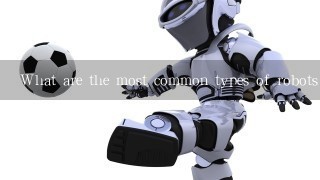What are the most common types of robots used in education?

Common types of robots used in education include:
- Educational robots: These robots are designed to provide hands-on learning experiences for students of all ages. They can be used for a variety of activities, such as programming, robotics, and problem-solving.
- Social-emotional learning robots: These robots are designed to help students develop social and emotional skills. They can be used for a variety of activities, such as role-playing, storytelling, and group discussions.
- Learning robots: These robots are designed to provide personalized learning experiences for students. They can be used for a variety of activities, such as adaptive learning, personalized instruction, and virtual reality.
- Assessment robots: These robots are used to assess student learning. They can be used to track student progress, identify areas where students need additional support, and provide personalized feedback.
- Educational robots with specific skills: These robots are designed to provide students with specific skills, such as coding, robotics, or artificial intelligence.
Benefits of using robots in education:
- Increased engagement: Robots can make learning more engaging by providing students with hands-on experiences and interactive activities.
- Improved problem-solving skills: Robots can help students develop problem-solving skills by requiring them to think creatively and develop logical reasoning.
- Enhanced creativity: Robots can help students develop creativity by providing them with opportunities to experiment and explore new ideas.
- Development of critical thinking skills: Robots can help students develop critical thinking skills by requiring them to analyze information, identify patterns, and make inferences.
-
Personalized learning: Robots can provide personalized learning experiences for students by tailoring their instruction to their individual needs.



























































